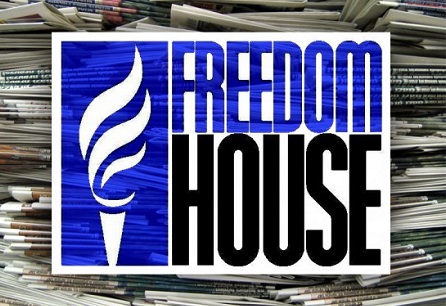Freedom House:Georgia takes top spot in region for media freedom

Georgia has the most media freedom in the region.
Today Freedom House released its Freedom of the Press 2016 report, which ranked countries each year in terms of press freedom.
This year’s report by Freedom House, a US-based non-profit organisation, said Georgia had the most media freedom in Eurasia region and ranked it number one above 13 other countries.
The annual reports gave each country and territory a numerical score from 0 (the most free) to 100 (the least free). This year Georgia earned a score of 49 out of 100 and the status of ‘partly free’ for freedom of the press.
In the Eurasia region, behind Georgia was Ukraine who earned a score of 53, while Moldova came third with 56 points. Crimea (94), Uzbekistan (95) and Turkmenistan (96) were at the bottom in the regional ranking list.
Other countries in the Eurasia region ranked in the middle were Armenia, Kyrgyzstan, Russia, Tajikistan, Kazakhstan, Azerbaijan and Belarus.
It should be stressed Georgia was the only country that gained the status of ‘partly free’ for media in the Caucasus region. All other states – Russia, Armenia and Azerbaijan – gained the ‘not free’ status.
Specifically:
- Armenia-63 (not free);
- Russia- 83 (not free);
- Azerbaijan -89 (not free);
Meanwhile in the global ranking Georgia placed 96th out of 200 nations surveyed.
Key findings of the Freedom of the Press 2016 report showed:
- On a global scale press freedom declined to its lowest point in 12 years
- Only 13 percent of the world’s population enjoys a ‘free press’ – that is, where coverage of political news is robust, the safety of journalists is guaranteed, state intrusion in media affairs is minimal and the press is not subject to onerous legal or economic pressures.
Freedom House said journalists around the world now faced growing levels of pressure, and varied threats to press freedom made it harder for media workers to do their jobs.
This meant the public is increasingly deprived of unbiased information and in-depth reporting. However, journalists and bloggers have shown resilience. Often at great risk to their lives, they strive to transmit information to their communities and the outside world, and circulate views that contradict those promoted by governments or extremist groups,” said Freedom House.
The annual Freedom of the Press reports assess monitoring and censorship, intimidation and violence against journalists, and public access to information worldwide. It is frequently cited by political scientists, journalists and policy-makers.
See the latest survey here.
 Tweet
Tweet  Share
Share